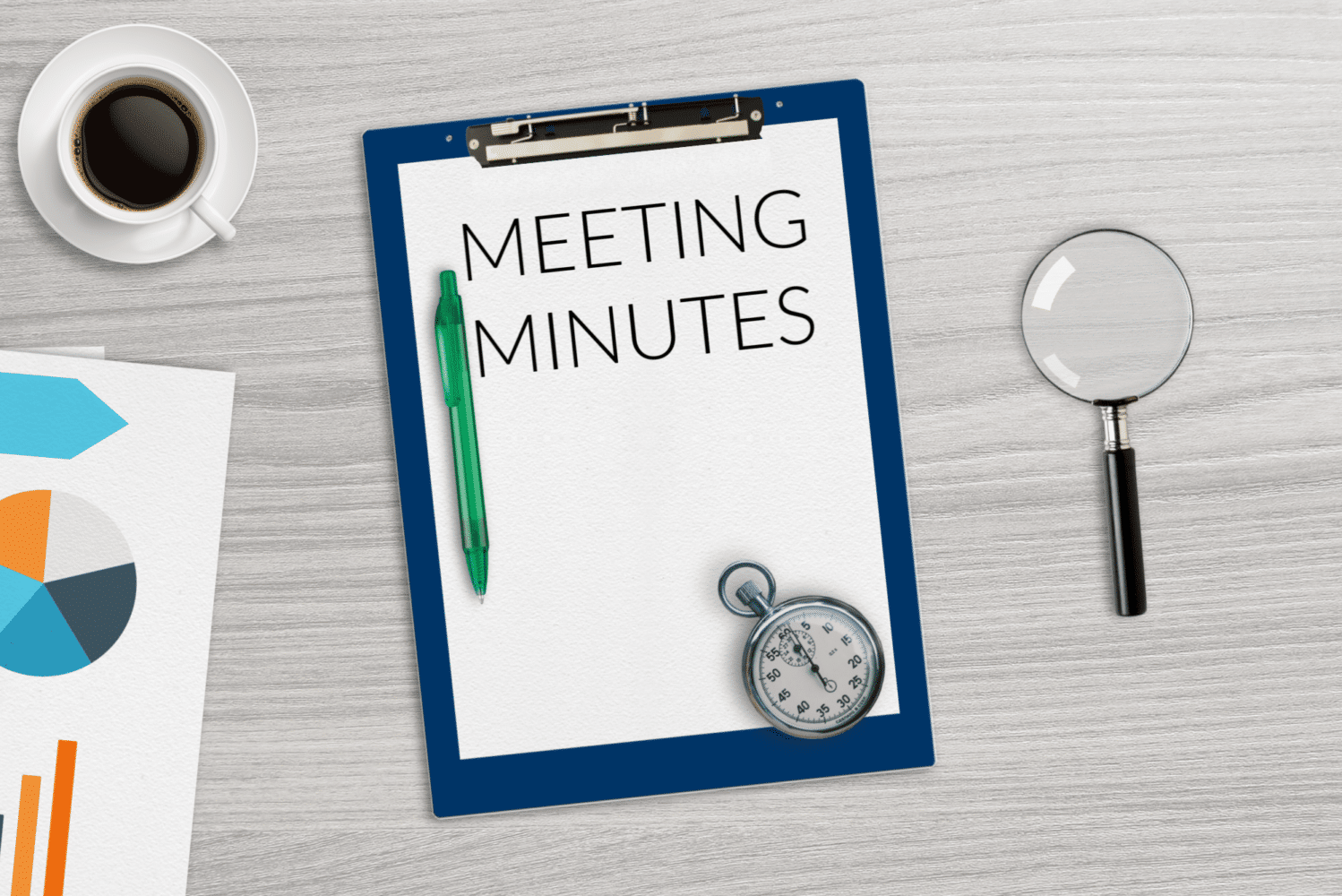Do you know how to write minutes of a meeting? Have you prepared any minutes before? it can be one strenuous task especially if you are writing them for the very first time.
Meeting minutes provide a written record of what was agreed at a meeting. Minutes tell people what was decided and what they need to achieve and by what date. They are important because they tend to stimulate memories about tasks that people need to do.
Writing minutes can save time and money. Once put down, there will be no other time set aside for reminders to respective stuff about what is supposed to be executed. Good minutes are concise and to the point, and oftentimes do not leave out critical information.
For meetings to be understood fully, the write up must follow a distinct procedure that gives the reader a clear guideline of what really was discussed.
So how do we write minutes? below is an outlied procedure of how to write minutes of a meeting.

How to write minutes of a meeting
Meetings inform people of what happened during the meeting and define the next step planned. To write effective meeting minutes you should include:
1.The subject of the meeting.
Every meeting needs a subject. This is important because it gives a clear guideline of what the meeting is about. It shapes the discussion to make it result-oriented. For instance, we can have our topic on ” Solving Nairobi City Sewerage Menace”. With our topic will focus on finding exclusive solutions for the specified topic without diverting attention.
2. The names of the participants
The names of attendees are important in any meeting. First of all, they are the reason why the meeting is there and it cannot be scheduled when it lacks participants. The names should be Written randomly depending on the roles of the participants. You should write both the names.
3. Names of absent participants
This is not necessary but some organizations prefer to have their names including. Others may be informed of apologies issued earlier by the participants so that they can access the next meeting.
4. Previous minutes
Especially for a continuing meeting, it is crucial that the previous meeting minutes are read.
Firstly, by reading them, members who were absent in the meeting are informed of what happened or the progress achieved on so far.
Secondly, they are read to remind the team where they last left.
5. Agenda
Agenda items make up the body of the minutes. An agenda refers to a list of items which the participants in a given meeting hope to accomplish at the end of that meeting. Agendas begin with a call to order and end with adjournment. A call to order is recognition of the attendance of the members present. When recording the agenda in the minutes of a minute, the first thing to do is to decide on the components of that meeting agenda. The following are the components of a meeting minutes agenda.

1. Informational items:
These are agenda items that inform members about something during every meeting: For instance, it can be updating the team on an upcoming staff, or outcomes of a previous meeting.
2. Action items
These comprise of things that the group may want to review during subsequent meetings. They also may be activities to be carried out by specified participants within a given time frame.
3. Forward planning
These are things that the participants want to prepare for the future. This can include building two extra classrooms for a congested class.
6. Arising matters
This comprises of things that have occurred during the meeting or the time between the previous and the current meetings that need a touch or quick action.
This can be, for example, the county government has stalled a building the team was working on. This means a quick action should be taken to find a solution.
6. Calendar or due dates
This is majorly to inform the team on when the discussed agenda is due to be delivered. It can be aswell new dates. for the next meeting.
Read: How to get Business Ideas in Kenya – 2020 Update
7. AOB
AOB’s includes any additional items that the participants want to raise or make a comment on something noted from the meeting.
AOB’s are important in a meeting because they offer participants a free will to adjust, comment and correct the minutes before implementation.
Other additions may include future expectations, predictions or the target of the team over a period of time.
8. Adjournment
This is the final part of the meeting. It indicates the exact time the meeting was ended and by who. In the adjournment, it is also important to note the venue and time of the next meeting.
9. Signature
Signatures are important especially when the meeting is for official purposes. A signature legally binds the participants on the outcomes of the meeting. This is in case something goes wrong they will be liable for the meeting.
It is usually signed by the company director or the secretary.
Read: How to Write a Business Plan in 2020
How to write minutes of a meeting conclusion
Writing minutes can take time and may seem like an unimportant task but not taking meeting minutes can be costly in terms of both time and resources.
If you don’t take minutes, you will find that your colleagues have different recollections from the meeting than you. They also may have different ideas about what was agreed. If there are no minutes, then important tasks will be forgotten or not achieved by the due date.
Creating meeting minutes provides a written record of what was agreed at a meeting. Without meeting minutes, you have no recourse if an action was not carried out. In the worst case, if meeting minutes are not written you may end up having to repeat the meeting.




